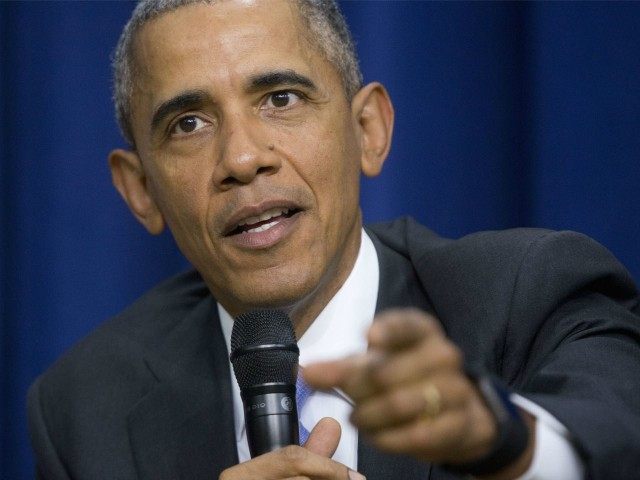In August 2015, the Obama administration announced its Environmental Protection Agency (EPA) plan to cut a national average of 32 percent of carbon dioxide emissions by 2030 from power plants’ 2005 levels.
The proposal, known as the Clean Power Plan (CPP), requires states to create and implement emissions reduction plans in order to meet state-specific goals mandated by the EPA. CPP is expected to be one of the most contentious issues Congress and the White House will face in the upcoming budget battle in Washington, DC.
A 2014 study by NERA Economic Consulting estimates CPP’s total price tag to be between $41 billion and $73 billion per year in higher electricity prices, and the price hikes would likely hurt the nation’s most impoverished citizens the most.
The Obama administration has not only doubled down on its Clean Power Plan since it first announced the plan in 2014, it proposed—as part of its fiscal year 2016 budget for the EPA—the Clean Power State Incentive Fund (CPSIF), which would cost taxpayers as much as $4 billion, not including any of the costs associated with higher electricity prices.
CPSIF would provide states with bonus cash for voluntarily choosing to go beyond the standards required by the Clean Power Plan. Some states would receive $80 million or more for forcing power plants to adhere to stricter carbon dioxide reduction standards, a move that would lead to even more dramatic electricity price increases for those unlucky enough to live in states choosing to chase the extra federal tax dollars.
Supporters of the Clean Power Plan, called “President Obama’s top priority for the EPA and the central element of the U.S. domestic climate mitigation agenda,” say the additional costs are necessary and would produce many benefits. EPA claims, in its fiscal year 2016 budget, CPP will avert 2,700 to 6,600 premature deaths in 2030.
That claim is false. Carbon dioxide is not toxic to humans at current or any reasonably projected levels, and the EPA knows it. Reducing carbon dioxide saves no lives. The lives EPA claims will be saved by the rule would result from ancillary reductions in ozone, sulfur dioxide, and other pollutants also to be reduced by the rule. We don’t need CPP for that. These and other potential air toxins are already being reduced by technological improvements and other EPA regulations. The EPA is attempting to double-count these lives as being saved by the CPP in order to show some benefits to justify the rule’s atrocious costs.
A recent study from the Black Chamber of Commerce shows CPP amounts to a particularly regressive tax on the poor and minorities who make up a disproportionate share of those living in poverty. The study estimates CPP will cause job losses of seven million for blacks and 12 million for Hispanics, with the poverty rate increasing by more than 23 percent for blacks and 26 percent for Hispanics. All this for no measurable reduction in global temperature.
Climate researchers Patrick Michaels and Chip Knappenberger, using an emulator developed in part through the EPA’s support, predict CPP will prevent only 0.018ºC of temperature rise by 2100.
The EPA and the Obama administration say CPP is a necessary step toward implementing a clean energy future for the world, but evidence shows it’s nothing more than a power grab by the feds. Increased industrial development in China, India, and other fast-growing developing countries means any CO2 reductions made in the United States will be swamped by CO2 increases in rapidly developing regions.
CPP will raise electricity prices, cut U.S. jobs, and disproportionately harm the poor. The only way most states would ever decide to go further than CPP’s onerous requirements is through coercion or bribery, which is precisely what the Clean Power State Incentive Fund is intended to provide. States would be foolish to take the bribe. By any estimate, the costs from higher energy prices and resultant job losses arising from the plan would be far greater than the payoff by the federal government.
Justin Haskins (Jhaskins@heartland.org) is a pro-liberty writer and editor of The Heartland Institute’s Consumer Power Report. H. Sterling Burnett, Ph.D. (hsburnett@heartland.org) is a research fellow in energy and the environment with The Heartland Institute.

COMMENTS
Please let us know if you're having issues with commenting.